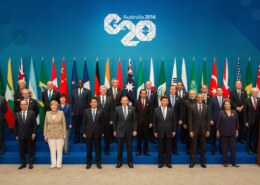Discuss the factors contributing to India’s persistent trade deficit and their implications for the economy.Suggest measures to address this issue.(100 words)
India’s economic development over the last decade has had many major milestones ¹ ² ³: In 2019, India’s nominal GDP increased to become the fifth largest in the world at $2.87 trillion, surpassing the United Kingdom’s $2.83 trillion GDP at that time. From February 2010 to February 2020, real GDP groRead more
India’s economic development over the last decade has had many major milestones ¹ ² ³:
- In 2019, India’s nominal GDP increased to become the fifth largest in the world at $2.87 trillion, surpassing the United Kingdom’s $2.83 trillion GDP at that time.
- From February 2010 to February 2020, real GDP growth rate was around 6.66% on average.
- This is a historic tax reform for India with introduction of Goods and Services Tax (GST) which happened in July, 2017.
- Over a nine-year period, there has been an infrastructure development by building of seventy-four airports in India.
- Export data reveals that India’s role in global supply chains is growing bigger and bigger.
- It is expected that Indian GDP would grow by 6.8% and 6.5% respectively for FY’24/25 and FY’25/26.



India's persistent trade deficit is a complex issue with several contributing factors and implications for the economy. Here are some of the key factors and potential measures to address this challenge: Factors Contributing to India's Trade Deficit: Import-Dependent Economy: India's economy is heaviRead more
India’s persistent trade deficit is a complex issue with several contributing factors and implications for the economy. Here are some of the key factors and potential measures to address this challenge:
Factors Contributing to India’s Trade Deficit:
- Import-Dependent Economy:
- India’s economy is heavily dependent on imports, particularly for energy (oil and gas), electronics, machinery, and raw materials. This high import dependence leads to a trade deficit.
- Overdependence on imports makes the economy vulnerable to fluctuations in global commodity prices and exchange rate volatility.
- Lack of Export Competitiveness:
- Indian exports lack global competitiveness due to factors such as high production costs, inefficient logistics, and lack of technological innovation.
- Sectors like manufacturing and agriculture face challenges in terms of product quality, branding, and market access, limiting India’s export potential.
- Structural Imbalances:
- India’s consumption-driven economic growth model, with a high propensity to import consumer goods, contributes to the widening trade deficit.
- Lack of investment in infrastructure, research and development, and skilled labor development hinders the country’s ability to boost exports.
- Currency Fluctuations:
- Volatility in the Indian rupee’s exchange rate against major currencies, such as the US dollar, can increase the cost of imports and make Indian exports less competitive.
- This can further widen the trade deficit, as imports become more expensive, and exports become less attractive in global markets.
See less